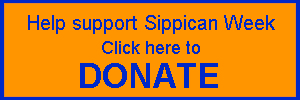All shook up: ORR students use seismograph to study earthquakes
Mattapoisett may not be the epicenter of seismographic activity in the traditional sense, but the junior high will be a hub of earthquake studies.
Eighth grade science classes at Old Rochester Regional Junior High will study earthquakes with a seismometer in their own building.
Science teacher Therese Valente has a seismometer, the device used to detect earthquakes, on loan from Rochester Memorial School. Coupled with a $4,000 grant from the Toshiba America Foundation, she and fellow science teacher Carol Fletcher will give their students a hands on introduction to seismology.
Valente wrote the grant last April and is working with the Boston College Educational Seismology Project to set up and use the seismometer. This year, students will learn how to triangulate to find the epicenter of a quake, study the causes and effects of earthquakes and observe activity in their own area. Boston College’s program offers a number of lessons for Valente and Fletcher to do with their students, which is crucial.
“Without that, it’s just a piece of machinery,” said Valente.
The seismometer is also more exciting than looking at static examples of earthquake activity, students can study blips on their screens and compare them to more high-tech equipment at the U.S. Geological Survey’s website and at Boston College’s Weston Observatory.
The school’s seismometer is sensitive enough to register earthquakes all across the world, said Stacy Moulis, a seismologist with Weston Observatory, including the 6.7 magnitude earthquake that struck Guam on Wednesday.
Moulis visited the junior high to share lesson plans with Valente on earthquakes and how students can use the information generated by the seismometer.
Students are taught to discern earthquake data from more mundane activity, such as passing traffic or a storm.
“Earthquakes have signature vibrations as they travel through the Earth,” Moulis explained. “The seismometer records everything, but differentiates between an earthquake and other vibrations. One of the first things the kids do is try to determine if it’s an earthquake or not. There’s a lot of interpretation.”
Students view the seismographs from their seismometer and others monitored by Weston Observatory on the observatory’s website.
“They have access to the same data that professional seismologists do,” Moulis said.
While New England isn’t known for much earthquake activity, Moulis noted that Massachusetts experiences, on average, one earthquake per year. In the northeast, there are between three and four earthquakes per month. The last one was recorded on Sept. 9 in Rhode Island.
Valente said the seismometer will definitely make a difference in students' studies.
“I think it becomes more real to them,” she said.
The seismometer is already set up in the library with a computer attached that shows the seismograph. Another computer in Valente’s room shows the same thing. The information is also available online.
“Everyday some of them come in and sit down at the table and look to see if anything happened overnight,” Valente said. “It’s going to be even cooler when I learn more about it.”















